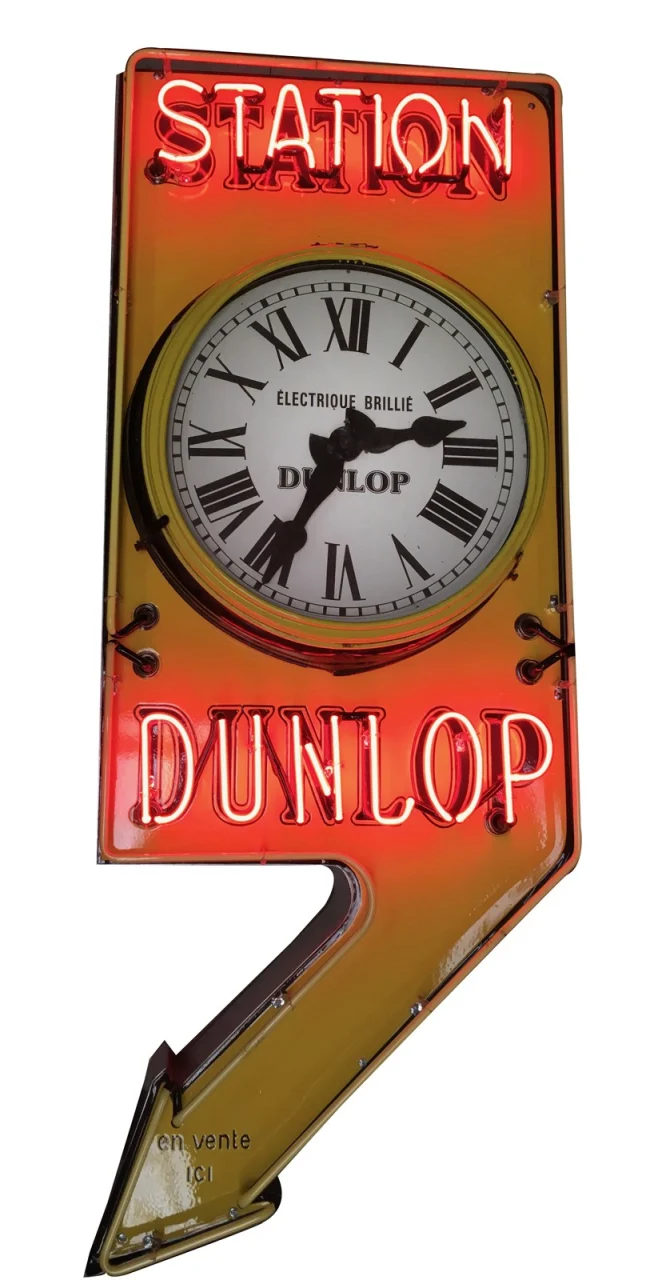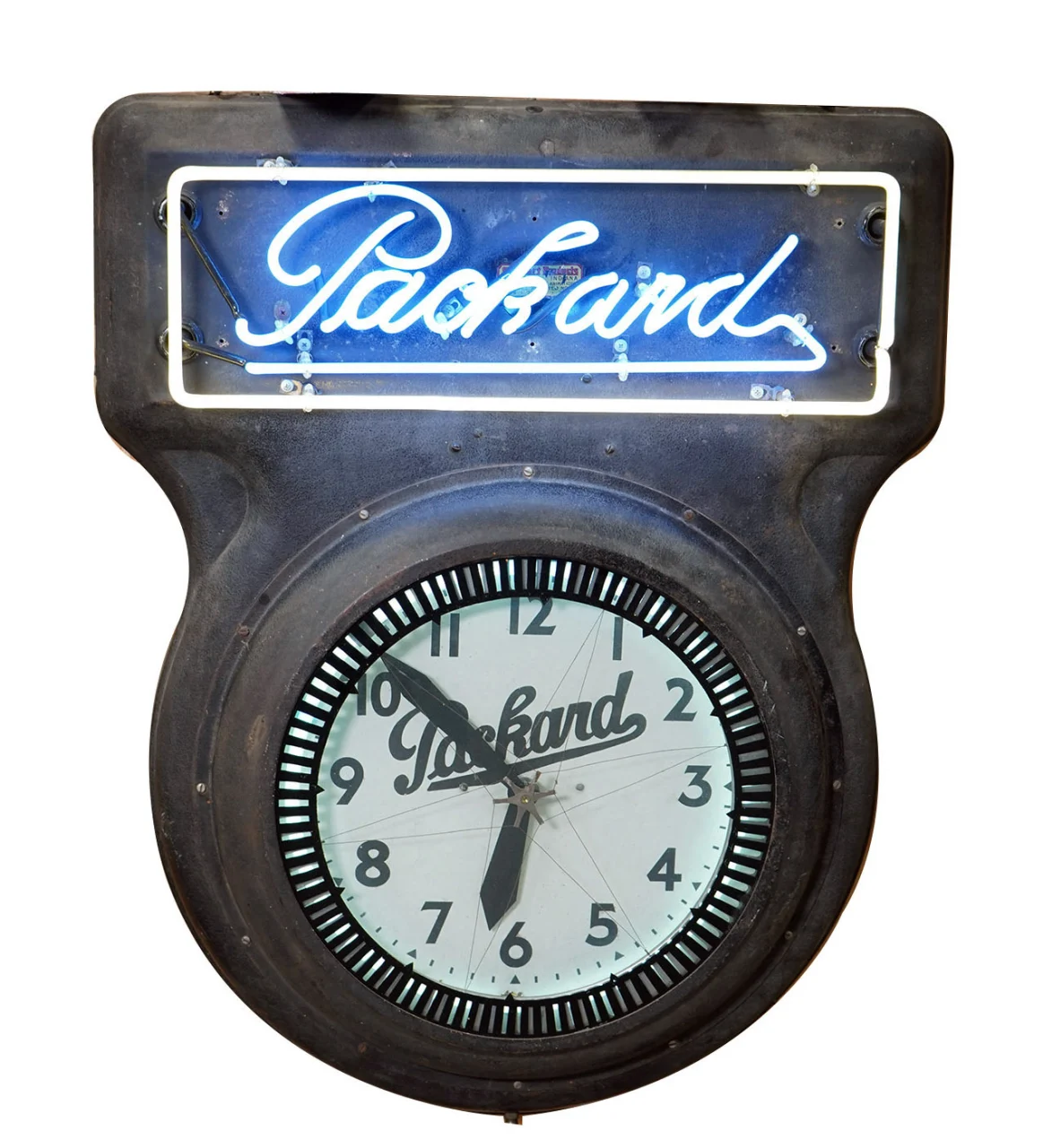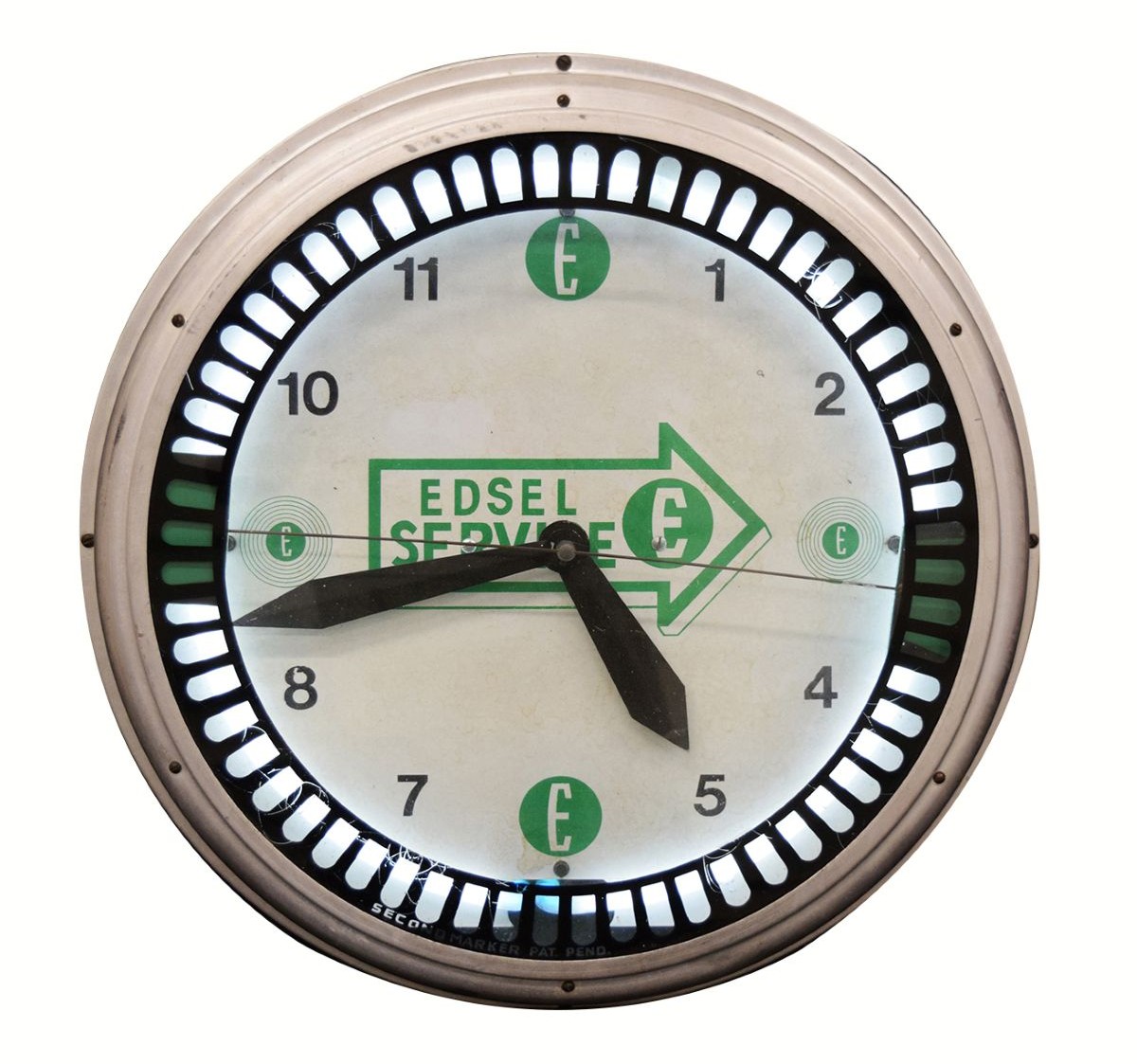
It was only a matter of time. With mass production of clocks on the rise in the late 19th century, it’s not surprising that the advent of clocks used for advertising purposes happened around the same period. Credit for that goes to one Edward Payson Baird, who left clockmaking giant Seth Thomas to branch out on his own in 1887. Based in Montreal, Canada, the Baird Manufacturing Company produced cases and doors for advertising clocks that housed Seth Thomas movements.
Always on the lookout for innovative ways to advertise, companies clamored to get their branding on these clocks, which they would then give away to businesses that used their products. The hope: A branded clock in a public place would likely garner thousands of glances from prospective customers as they checked the time of day. In the late 19th and early 20th centuries, one of the best locations for advertising clocks in rural areas proved to be the local general store, where consumers naturally spent lots of time.
The early 20th century also saw an increase in production—and big decrease in price—of that newfangled mode of transportation known as the automobile, initially a luxury only the wealthy could afford. Now the average Joe could pile the wife and kids in the family car and head off on a cross-country vacation, thanks to the growing U.S. highway system (most famously Route 66, commissioned in 1926 and completely paved by the end of the 1930s). By the 1950s, American road trips had firmly taken hold.

Those road-weary travelers naturally had to stop for a bite to eat or a night’s rest on their journey—as well as take care of any car problems along the way. Roadside restaurants, bars, motels and service stations sprung up to cater to the vacation-by-road adventurers—all of which became prime locations for advertising clocks hawking everything from soft drinks, beer and milk to spark plugs, tires and gas. Car dealerships, too, found a strategically placed clock—often embellished with brightly colored neon—went a long way in keeping their brand at the forefront of potential customers’ minds.

Colorful advertising clocks are often hot commodities at Barrett-Jackson Automobilia Auctions. Sometimes it’s a particular brand name—along with rarity of an item—that turns bidders’ heads. At the 2025 Palm Beach Auction, an extremely rare Dunlop Tires neon porcelain clock from the 1940s (pictured at top) brought in a whopping $79,350. “The clock was a stellar example with pristine porcelain, bright neon and was restored to time-keeping condition,” says Barrett-Jackson Automobilia Director Rory Brinkman. “It is a true once-in-a-lifetime find, and its auction performance demonstrated that.”
Another item representing the company founded by John Boyd Dunlop, who invented the pneumatic tire in 1888, sold at the 2017 Scottsdale Auction for $12,075; this example an extremely rare neon sign with a clock dating from the 1930s that was made for the French market.

Other times buyers may be searching for a unique item showcasing their favorite automobile make. A Packard fan went home from the 2023 Scottsdale Auction after placing the winning bid of $18,975 for a beautiful clock from the 1930s featuring the automaker’s name in neon, while a museum-quality 1950s Edsel Service neon clock sold for $28,750 at the 2022 Scottsdale Auction.
The Soda Wars are alive and well in the world of vintage advertising clocks, too. A stunning museum-quality all-original 1950s Pepsi-Cola neon clock with lighted marquee went to a new home for the winning bid of $21,850, while a neon Coca-Cola clock from the same time period sold for $11,500.
Whether you’re seeking out a unique piece of nostalgia to embellish a wall in your home or garage – or to display with your car collection – a vintage advertising clock may be just the timely ticket.
This article was originally published on Barrett-Jackson.com.

